Small garden design mistakes: 8 things to avoid when planning a small backyard
Need to know the common small garden design mistakes so that you don't recreate them in your space? We've got you covered
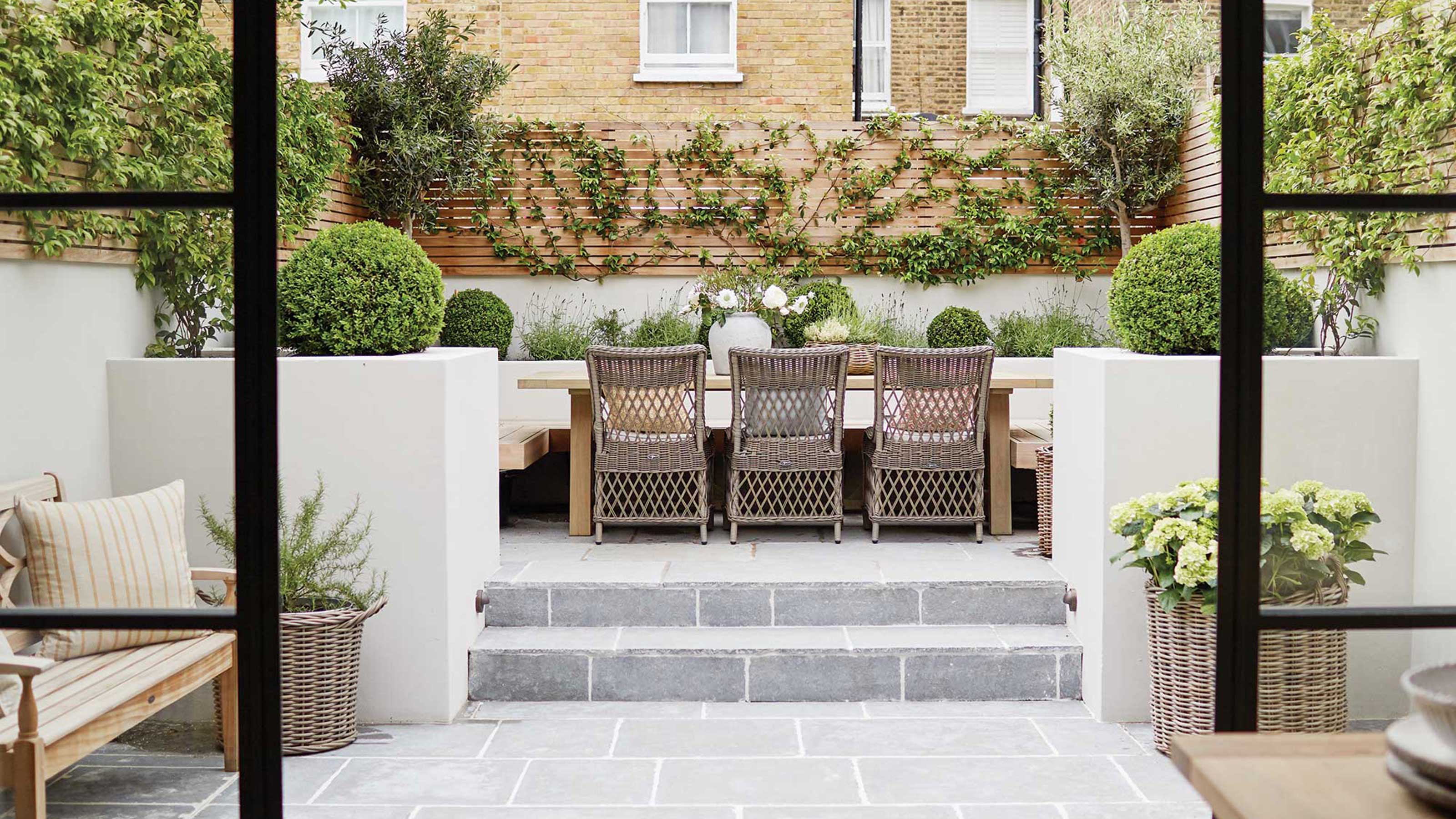

Avoid making these small garden design mistakes and you'll be well on your way to creating a gorgeous backyard. It's not always easy working with cramped conditions, but there are some simple dos and some definite don'ts to bear in mind.
With small plots, every design decision will have a dramatic impact on the look and the use of the space. Naturally, you'll want to pick features that utilize every inch and create a harmonious, welcoming zone. But some choices can inadvertently exacerbate the claustrophobic conditions and turn a plot into a place that you never feel inclined to use. From planting picks and color schemes to awkward layouts that seem to be a good idea at the time – we've rounded up the common errors when designing a small yard so that you don't have to find out the hard way.
And if you're after more small garden ideas, then our dedicated feature is full of tips and stunning designs.
Small garden design mistakes: 8 things to avoid
These common small garden design mistakes will help you know what to watch out for when planning your space. And we've got tips on what to do instead, so you can be sure to create a yard that's nothing short of fabulous.
1. Rushing the planning stage
'When you have a small garden, you must ensure you know exactly what you want to use your garden for, similarly to how you would design rooms in your house for specific uses,' says Jonny Brierley of Moda Furnishings. So, for the most successful results, planning is key. If you rush a design you could risk filling up your yard with features that you won't really need or use, and you'll quickly run out of space for the things you realize you forgot about.
So, carefully decide what you want to do in your yard when considering small garden layout ideas. Do you want to grow vegetables, host outdoor meals, welcome in wildlife, or simply relax? Prioritize the features that will need to be added to make these activities possible: if you want to grow vegetables, you'll need space for a raised bed, or at least a few large garden planter ideas. If you want to relax, then a seating area is a must – perhaps beneath some sort of cover so that a spot of rain doesn't deter you. Want to cook up a storm? Then you'll need a food prep station and of course one of the best BBQs, as well as an area for dining.
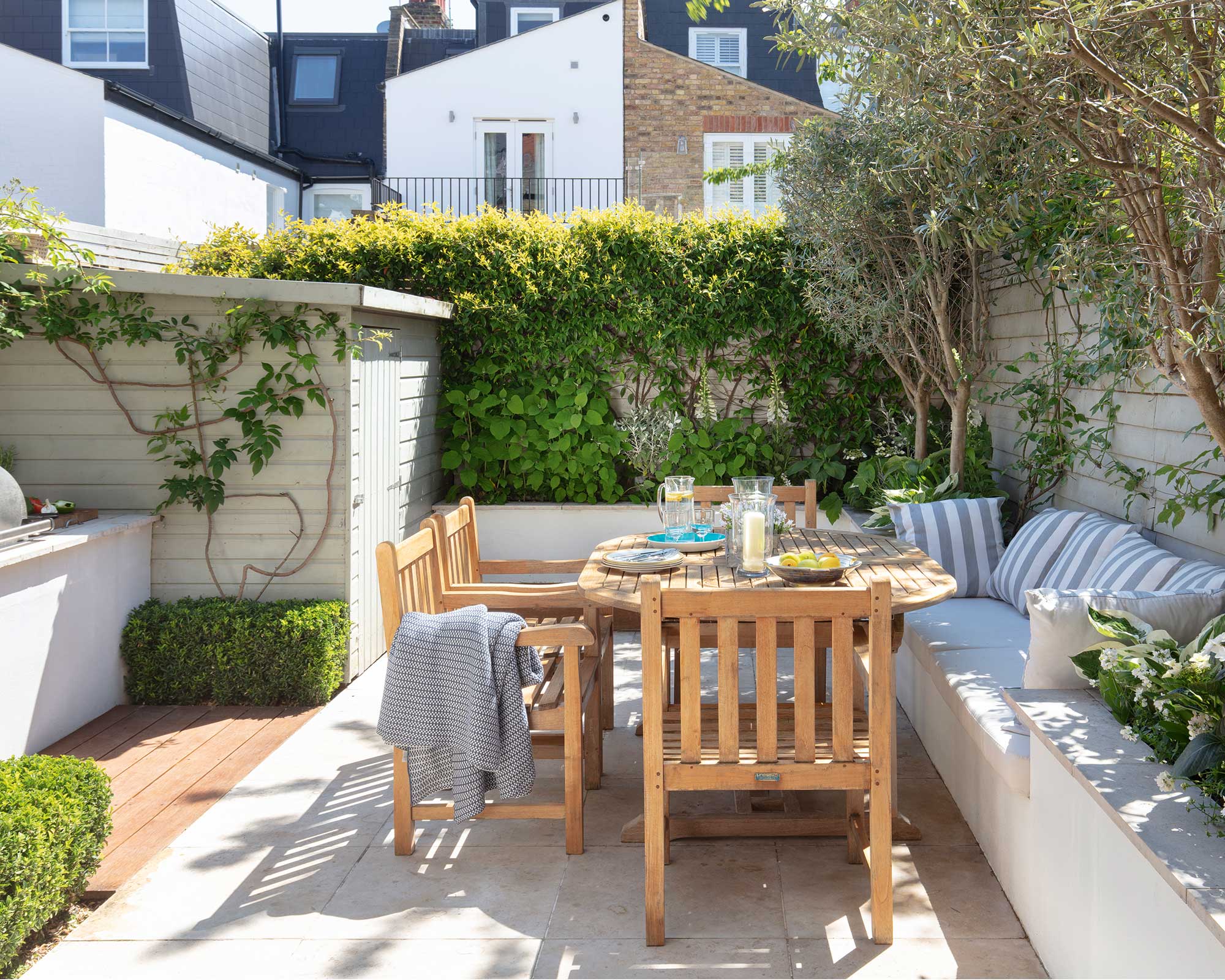
This chic backyard has been designed to make space for cooking, dining, and storage
2. Choosing single-purpose furniture over multifunctional pieces
'Versatility is key in small gardens as you need to be able to get as much as possible out of your space,' says Jonny Brierley of Moda Furnishings. So when it comes to picking the best garden furniture, avoid pieces that are only useful for one purpose.
For instance, instead of opting for that on-trend egg chair, think about benches or sofas which lift up to reveal storage space, or consider a bistro set. The latter will seat two people rather than one, can be folded away when not in use, and provides a space for alfresco dining as well as a quick sit-down with a cuppa. Tie-on cushions will keep everyone feeling comfortable, too. You can also find tables which have built-in fire pits or ice buckets, which can then be covered when not in use – ideal for taking your outdoor entertaining up a notch.
You can extend the idea to your landscaping too: if you're opting for raised beds or small walls in your plot, then these can also double up as benches.
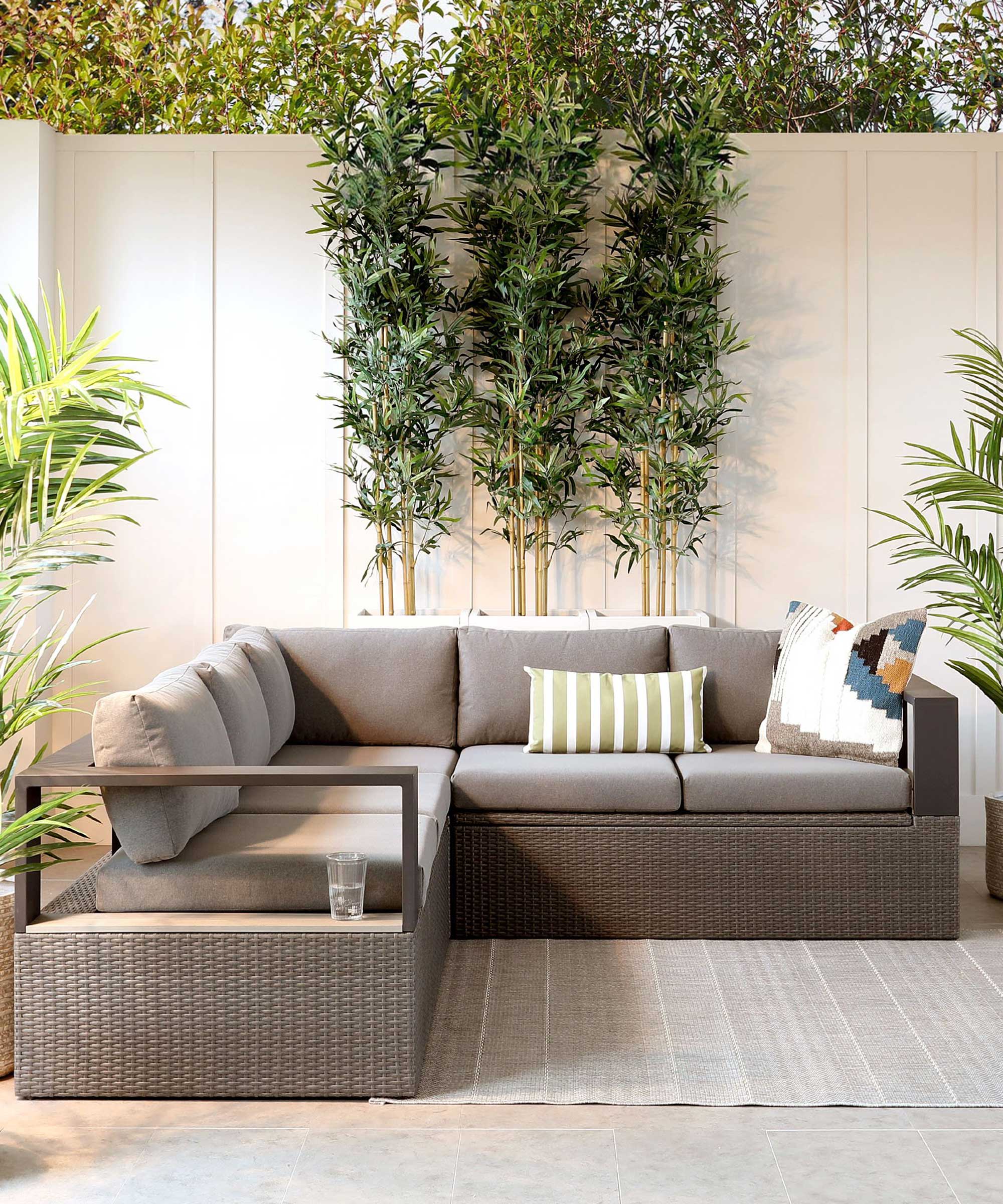
The Sorrento sofa from Danetti has built-in storage beneath the seats
3. Planting trees that are too big
If space is at a premium, planting a large tree (or a small tree that will quickly turn into a large one) can be a risky move. Not only will it take up precious meters in your plot, but the canopy of leaves can also block out the light leaving your yard feeling cold and gloomy. Plus, your planting picks will be limited, as not everything thrives in the dry and shaded patch beneath a tree.
In fact, planting a fast-growing shrub (such as leylandii) isn't a good idea either, as it can quickly take over your yard without regular maintenance.
There are, however, some very good choices which are suitable for small plots, or even for growing in pots, which can add color and character and are low maintenance too. Our guides on the best trees for small gardens and best trees to grow in pots are great places to start.
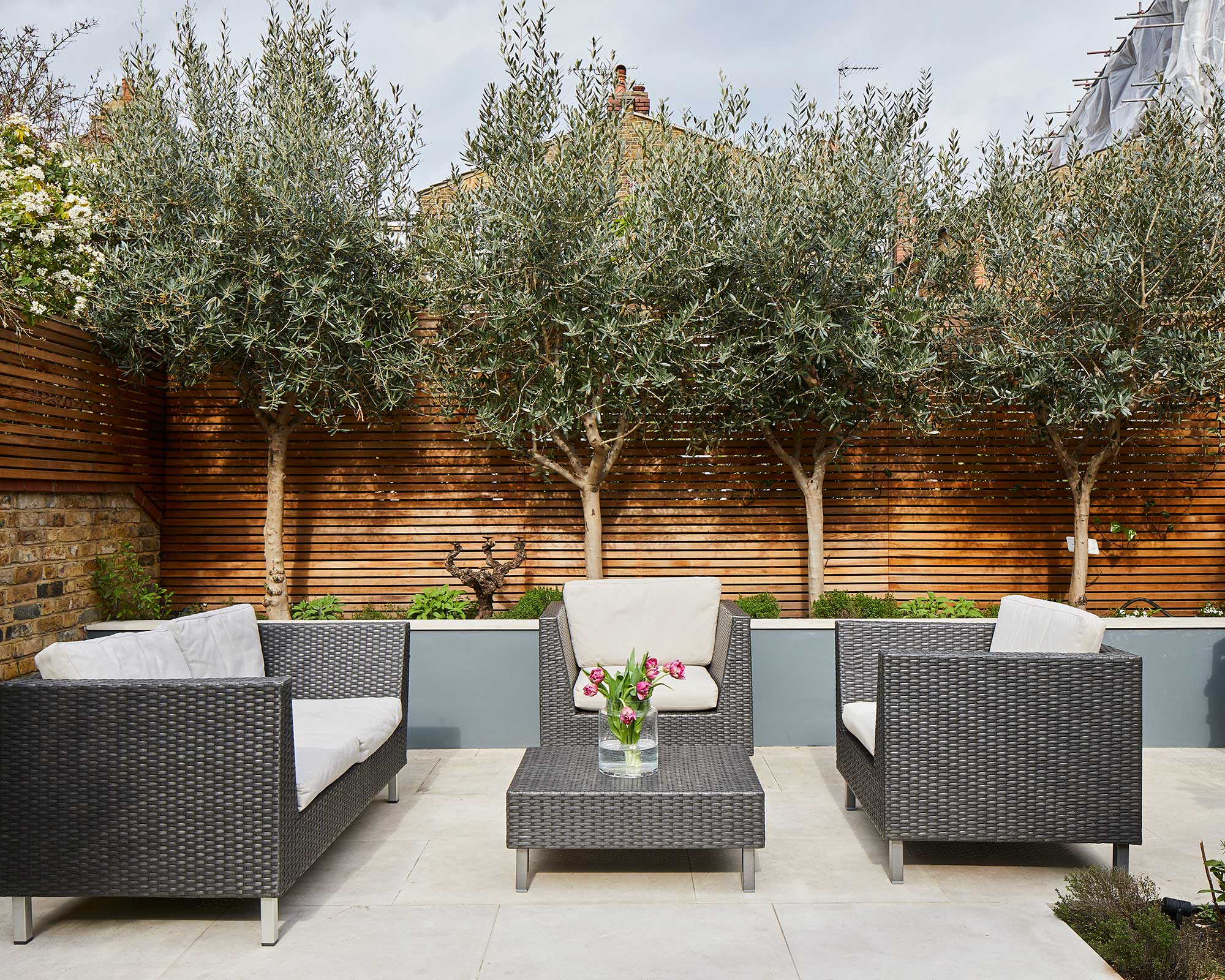
A row of olive trees is a good pick for a small plot – paving by Artisans of Devizes
4. Picking paving that overwhelms the space
Overly fussy or dark paving can overwhelm a small space and make it feel claustrophobic. Instead, pick larger tiles as suggests Isabel Fernandez, Director at Quorn Stone, which creates a more subtle and seamless appearance. Whether you choose natural stone or porcelain pavers, picking pale tones will also help to brighten the area.
To take it a step further, use the same paving both indoors and out (a particularly effective trick if you have French doors, bi-folds or accordion doors). That way, your living space will feel extended with an open and airy sense of flow.
'We also recommend choosing a grout color that is a close color match to the paver itself,' adds Isabel. 'This helps the grout to blend in with the pavers and gives the illusion of a larger area.'
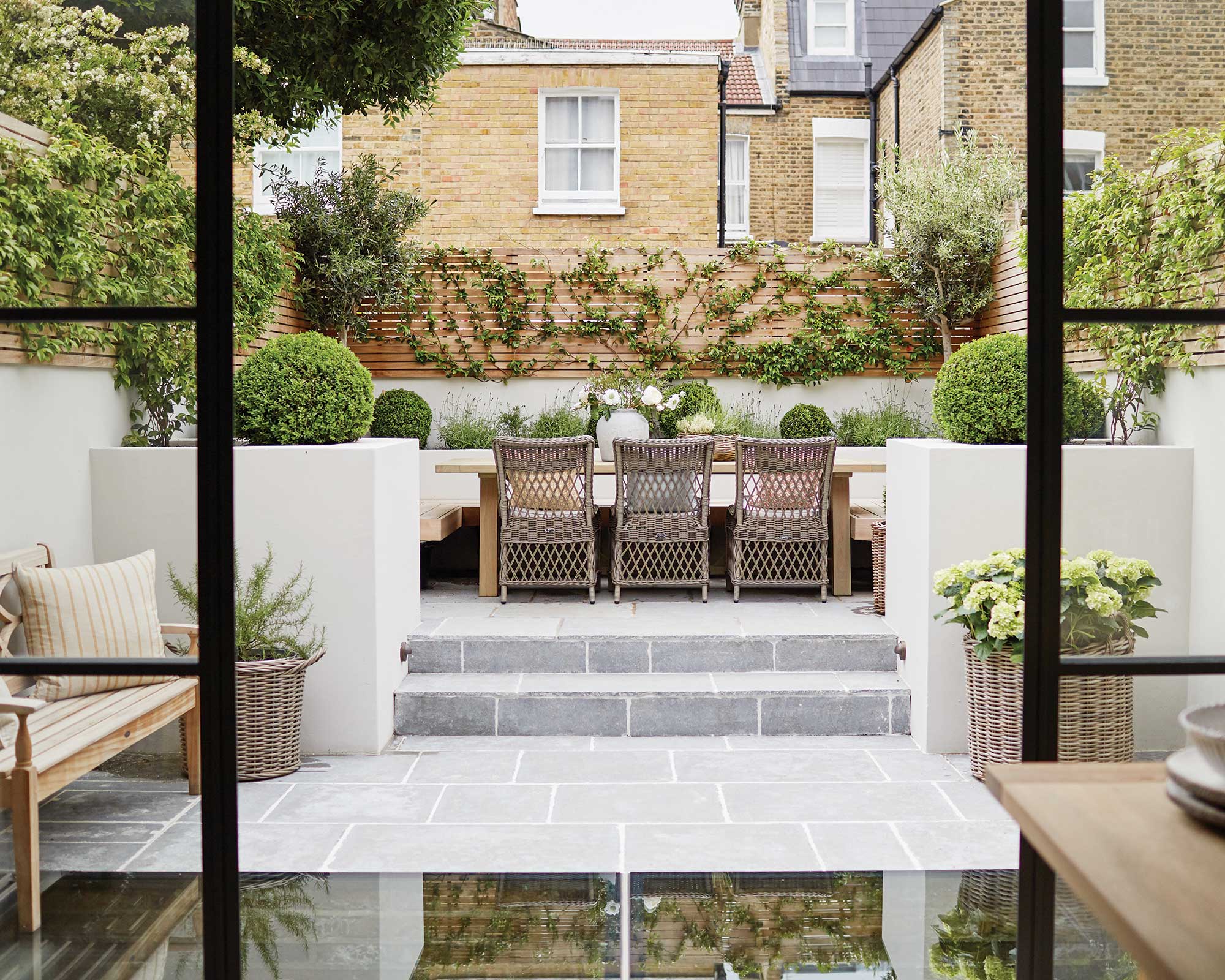
The Grafton Limestone paving from Artisans of Devizes doesn't dominate the space
5. Not settling on a cohesive color scheme
It's easy to get carried away when picking plants and go for one in every color. However, once you add them to your yard, you might find that the lack of cohesion leads to a sense of chaos.
It's the same for furniture and accessories too, or even your hardscaping, such as flooring, fences, and walls. So, rather than throwing together a mishmash of random hues, restore a sense of balance with a tonal palette that enhances the mood you want to create.
Neutrals are a failsafe choice for pared-down elegance, and can feel beachy, Scandinavian-chic, or luxe depending on the textural finishes. Soft antique white mixed with billowing planting of white gaura, cosmos, hollyhocks and roses can even create a cottage garden feel. Or, you might want to go for gentle pastels, pretty pinks, or even jolly yellows mixed with pops of purple for a striking look.
Alternatively, dark and moody tones are great for making a bolder statement with an industrial edge and will help jewel-colored planting or acid-green ferns to pop. What's more, painting a wall or fence in a darker shade can help the boundaries of your plot seem to recede, making them less noticeable. You can find more ideas in our guide to garden color schemes.
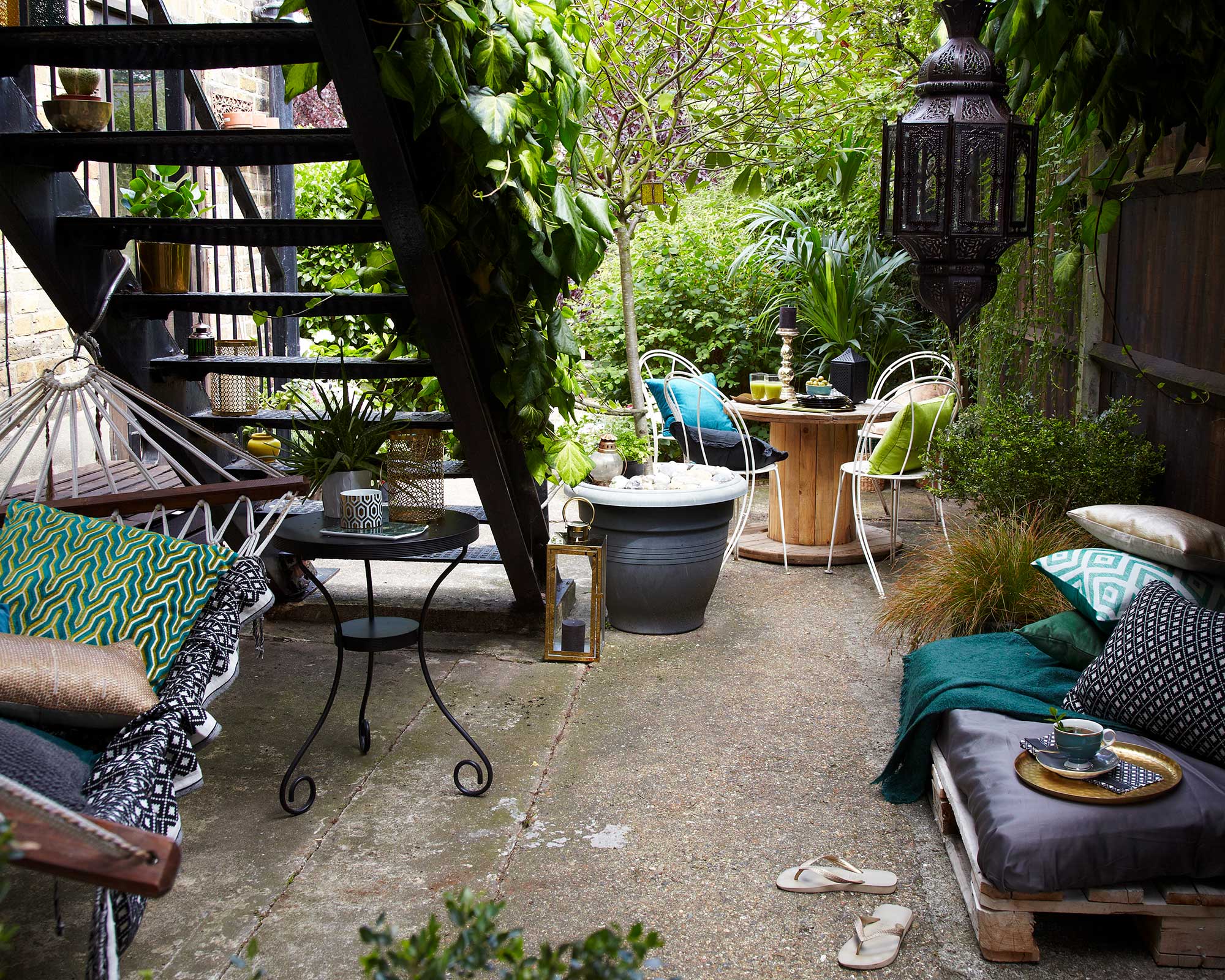
A dark and moody scheme works well in this urban plot
6. Adding an unnecessary lawn 'just because'
If you've had a look through our lawn ideas then you might be tempted for one of your own. But in a small plot, this isn't a decision to take lightly.
First of all, a lawn needs a lawn mower, and a lawn mower needs somewhere dry to live when not in use, so you'll need to sacrifice space for storage. Second, lawns are a lot more maintenance than other groundcovers. Sure, a small lawn will be quicker to look after, but you might decide that it's not really worth the bother. Also, remember that a lawn shouldn't be walked on if it's rainy or the ground is frozen. So, if you live somewhere where these conditions are frequent, a lawn will automatically reduce the amount of your yard that you can actually use throughout the year. And finally, if your plot is shady, then you could be facing a losing battle anyway – most lawns need a minimum of four to six hours of sunlight a day for healthy, lush results.
So what are the alternatives to grass? There are plenty of stunning decking or patio paving ideas to try, whilst gravel can offer a more relaxed (and budget-friendly) look. If you want something softer and more organic, then bark chippings might be the way forward. Or if you're dead set on a lawn, how about no-fuss artificial grass instead?
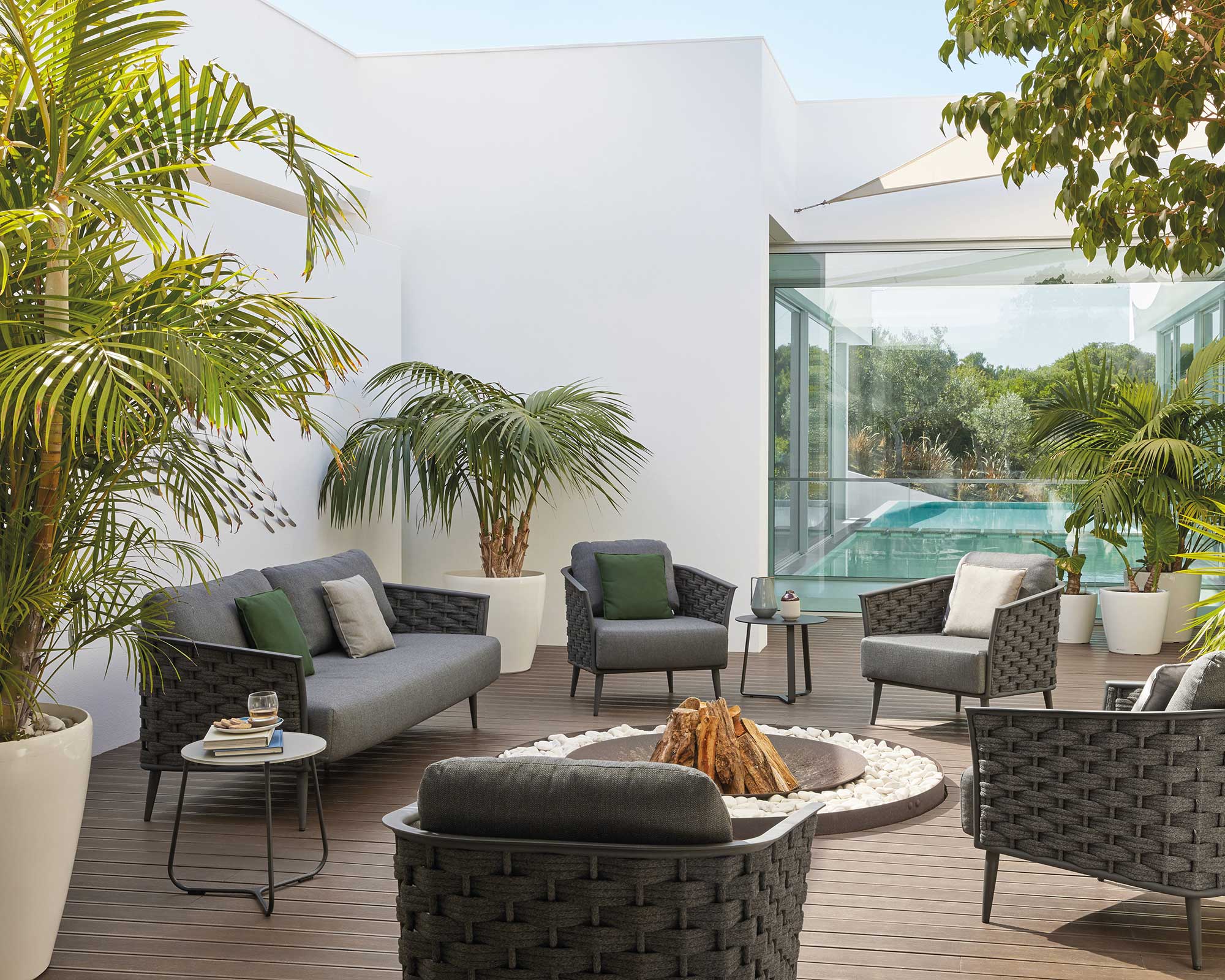
A deck is more practical and less maintenance than a lawn and can look fantastic, as shown in this set-up by Go Modern Furniture
7. Forgetting about the sun
'Everyone wants a garden that's visually appealing,' says Chris Bonnett of GardeningExpress.co.uk. But it's also important to think about the conditions your plants need when designing your small outdoor space.
'Consider things like where the sun rises and sets and where the most shade is – this will help you to decide where the best location is to grow any plants and crops,' Chris says. This is especially important in smaller city gardens, which are often overshadowed by surrounding walls or buildings.
Think 'right plant, right place' when planning your scheme and you will be rewarded with a garden that thrives. Our guide to shade loving plants will come in useful if your plot is lacking lots of sun.
Of course, it's not just the plants that you need to think about – you and your guests will probably want to enjoy some of that sunshine too. Bear this in mind when planning any outdoor seating areas – a bench that catches the evening sun will be much more tempting than one that is banished to a dark and dreary corner.
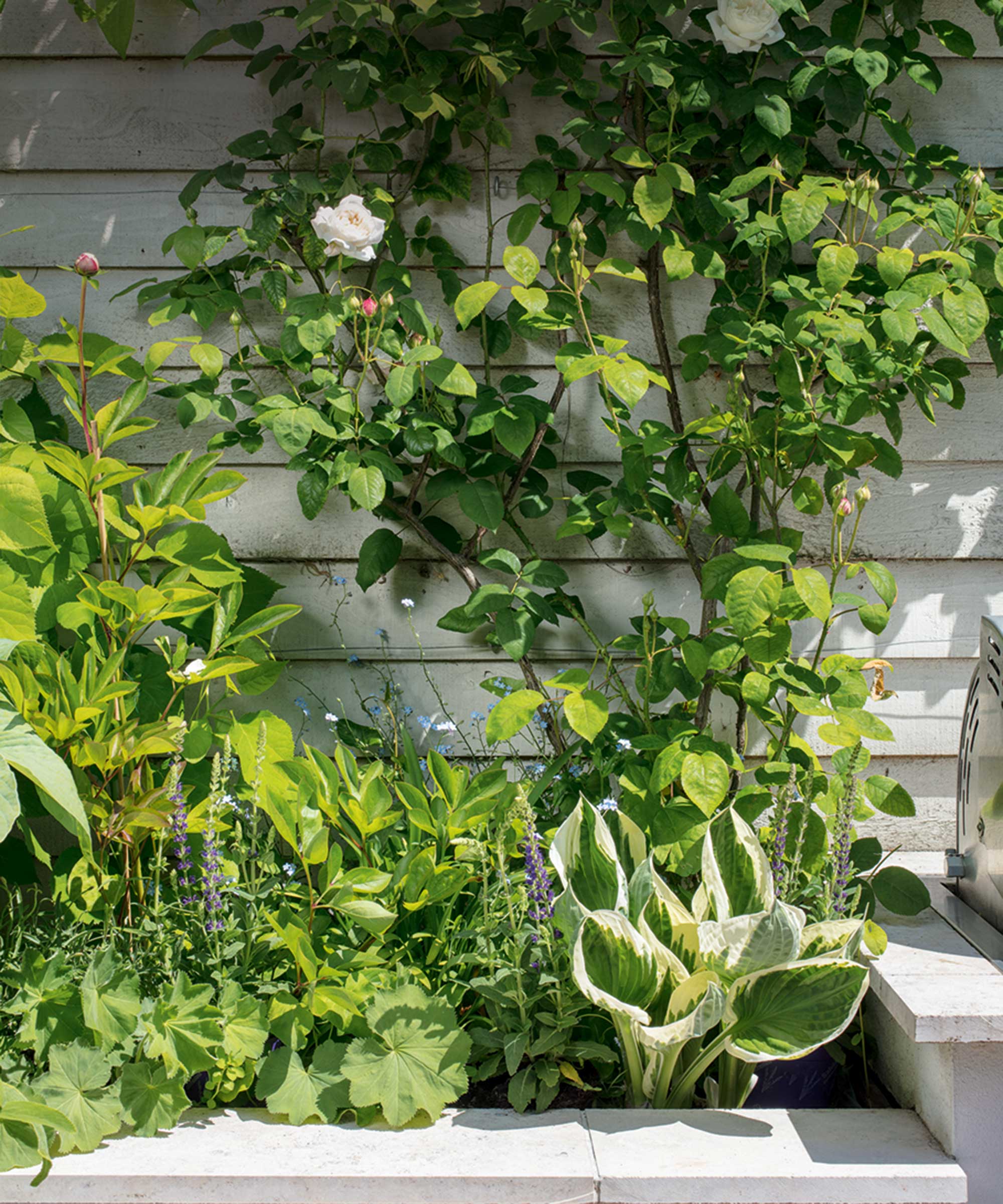
Pick shade-loving plants such as these hostas for less sunny spots
8. Holding back on borders
Have you checked out our flowerbed ideas yet? If you have, you'll know that there are so many opportunities when it comes to designing a border – from textural grasses to soothing colors and even scented picks. But when it comes to planning areas of planting for a small garden, it's easy to hold back. After all, a less-than-large plot should have less-then-large flowerbeds to match, right? Not necessarily.
Skimping on your borders is one of those small garden design mistakes that seems to make sense at the time. But actually, being bold and making them wider will not only give your plants more space to flourish, but it will also enable you to add layers and play with different heights. What's more, a bigger border will create much more of a statement in a small plot and help to draw the eye.
It's the same with containers – a couple of bold planters will look more stylish than a fussy cluster of little ones. Plus, they'll be easier to maintain.
Top tip: avoid cramming in too many plants when preparing your border. Instead, do your research to check how much they will spread as they establish and space them out accordingly.
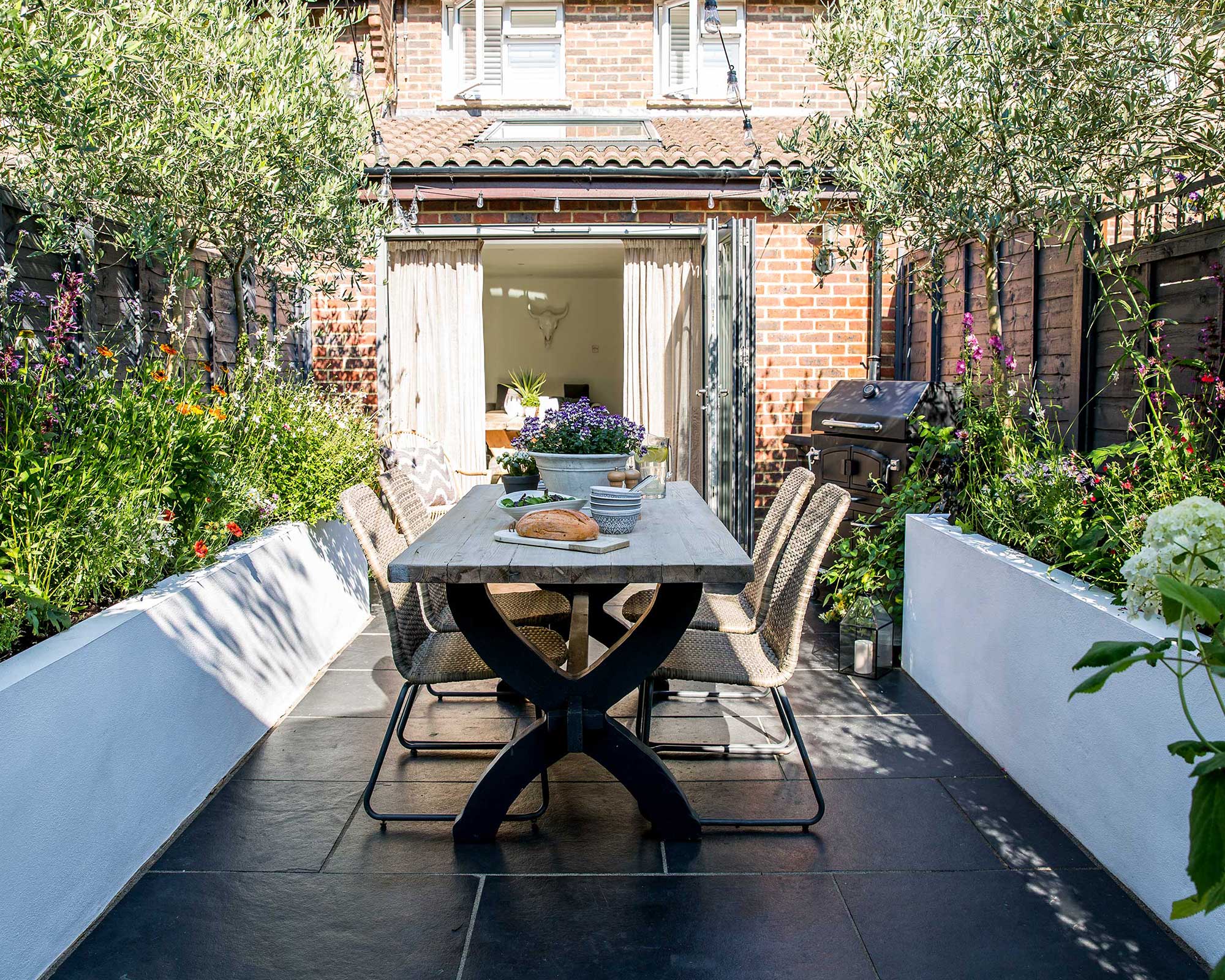
These bold borders bring drama to the space

The garden was always a big part of Holly's life growing up, as was the surrounding New Forest where she lived. Her appreciation for the great outdoors has only grown since then. She's been an allotment keeper, a professional gardener, and a botanical illustrator – plants are her passion.
